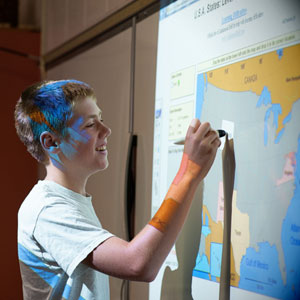STEM Blog
STEM EXPO!
Thanks to all who joined us for our STEM Expo this morning. We enjoyed showing you a small glimpse of the ways we make learning fun and science come to life! #STEMatSLS
 ,
,  ,
, 
Sewer Rats headed to State Championship!
Months of consistent hard work have paid off for the SLS Sewer Rats. Today at the DeMatha Catholic High School competition they were one of six out of 26 teams to qualify for the State Championship, to be held February 23rd at UMBC. Congratulations to the SLS Sewer Rats who were also awarded the Second Place trophy in the Innovative Project category. A huge thank you to our coaches Anne Clement Reed and Jenn Sleeman for the gift of time and talent leading the team to this accomplishment. Way to go Knights! The St. Louis community is very proud of you and can't wait to cheer you on at the State Championship. #YearoftheRat #STEMatSLSArchdiocese of Baltimore Catholic Schools

Robotic Knights
Practice and perseverance pays off! Congratulations to the SLS Robotic Knights who were awarded the Second Place trophy in the Core Values category. We are so proud of you. A huge thank you to our coaches Mrs.Michelle Donegan, Mr. Bill Maciejewski, Mr. Raj Kukadia and Mrs. Annpriya Thanaraj-Kukadia for their leadership and guidance. Way to go knights! #STEMatSLS

8th Annual STEM Night!
The Eight Annual STEM Family Fun Night brought over a hundred and twenty five students and their parents to St Louis School last night to learn more about robotics and participate in a series of hands-on STEM (Science, Technology, Engineering, and Math) activities. Our robotics and rocketry teams kicked-off the evening, demonstrating their robots, projects and programming skills while encouraging younger students to get involved. The Skyscraper Knights, We Speak for the Trees, the Sewer Rats, the Robotic Knights and the Flying Squirrels all had the opportunity to interact with the students and parents and share their enthusiasm for the creativity and exploration that robotics and rocketry enables. Featured guest Rocket Reba from the Eric Energy team introduced the group to frozen carbon dioxide, the power of static electricity, and had parents and students on their feet experimenting all about weather. Rubberband helicopters, paper circuits, hovercrafts and “What’s in a bag?” activities were among the hands-on classroom activities for all ages. As always, we are grateful to our parent coaches and the students for their dedication and cannot wait to see what is next! Lastly a great by SLS "Thank You" to all the teachers and staff who stayed to help out – we couldn’t do it without you! #BeaKnight #STEMatSLS @Archbaltschools
 ,
, 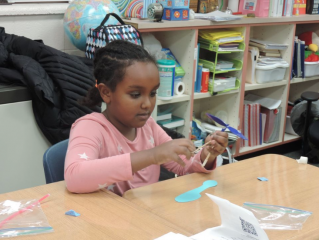 ,
,  ,
, 
Sewer Rats and Robotic Knights!
St. Louis School is proud to sponsor four FIRST LEGO League (FLL) teams this year. The Robotic Knights and the Sewer Rats are the last two St. Louis School FLL teams to compete in a qualifier this season. Join us in wishing them well and consider coming out to cheer the Robotic Knights tomorrow at JHUAPL Applied Physics Lab and or the Sewer Rats on Sunday at DeMatha Catholic High School
Dematha High School. A special thanks to our coaches, Michelle Donnegan, Raj Kukadia, Anne Reed and Jenn Sleeman for providing our students with this rewarding opportunity. Go, Knights! #STEMatSLS#BEaKnight #Archbaltschools
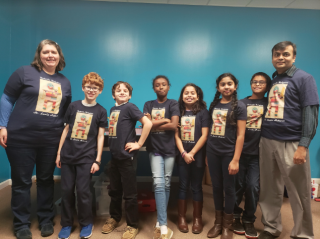 ,
, 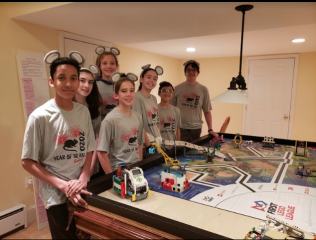
STEM Family Fun Night!
Don’t miss our 8th Annual STEM Family Fun Night on Thursday, January 30th.
Join us at 6:30 PM in the Cafeteria and learn more about the successful St. Louis School robotics and rocketry program. Meet the team members and learn about this year’s competitive challenges.
Rocket Reba from Eric Energy’s team will entertain us with her Science Spectacular Show at 7:00, followed by a series of age-appropriate hands-on STEM activities in our classrooms for ages Pre K through 8.
There will be raffles and the first 100 attendees will receive a small give-away. Fun for all ages!

Robots Empower Online Shopping
Amazon is the world’s largest online retailer and on Wednesday SLS Cyber STEM students had the opportunity to see the Amazon robots in action. The Baltimore fulfillment facility BWI2 in Dundalk covers the equivalent of 28 football fields and employs 4,000+ people. Students learned about “the magic” behind the process and how the packages arrive to us so quickly. We saw the Keva robots in action and even met a robot that stops at crosswalks! We would like to thank the Amazon facility for hosting us and giving us a better understanding of how robotics can improve our daily lives.

Sewer Rats!
The Sewer Rats team is the third St. Louis School FIRST LEGO League (FLL) team to compete in a qualifier this season. Join us in wishing them well and consider coming out to cheer them on Saturday at Dematha High School. A special thanks to our coaches, Mrs. Anne Reed and Mrs. Jenn Sleeman for providing our students with this rewarding opportunity. Go, Knights! #STEMatSLS

STEM Certification Celebration
We were thrilled to have Howard County Executive Calvin Ball, Dr. Donna Hargens, Superintendent of Catholic Schools and Jim Sellinger, Chancellor of Education join us this morning to celebrate our recent STEM certification. We are grateful for their kind words, congratulations, support, and leadership! #CatholicSchools #RiseAbove
 ,
, 
WGTS 91.9
For most of us, radio is a regular part of daily life. Have you ever stopped to consider what it takes to produce a show? Today, St. Louis School 8th Grade students got a virtual tour of local radio station WGTS 91.9 FM and learned exactly what it takes. Producer Spencer White and morning talk show hosts Jerry Woods and Blanca Vega welcomed us into their new production room and answered student questions, covering everything from show preparation, music selection, and the technology and algorithms behind it. WGTS is a Christian Radio station that inspires listeners with words of kindness, hope, and prayer. The morning show focuses on “starting your day with a smile, some inspiration and a good dose of audio coffee.” We would like to express our thanks to the team at WGTS and to Ms. Sandy Osborne, our Music teacher, who arranged this meeting and prepared the students with background information and questions for the hosts. Perhaps we have some future radio engineers, producers and on-air talent in the SLS Class of 2020. To learn more about WGTS visit: http://wgts.org/
 ,
,  ,
, 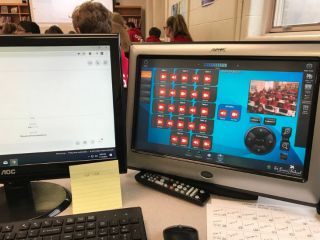
We Speak for the Trees bring home trophy!
Congratulations to the members of the We Speak for the Trees FLL team for winning Second Place for Robot Design at today’s Catonsville High School qualifier. The St. Louis community is very proud of you. Way to Go Knights!
 ,
,  ,
, 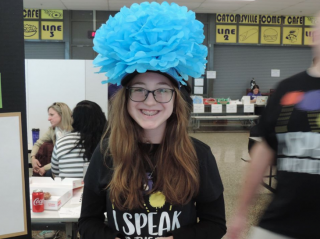
Taking Chances with Probability
Over the course of a game of Monopoly, how likely is it that you would end up in jail? As part of our ongoing STEM Speaker Series today SLS Fifth Grade students had the opportunity to learn how to compute the answer to that and similar questions from Mr. Mike Blasi, retired National Security Agency employee. Mr. Blasi is a member of the NSA Speakers Bureau, serves as a guide at the National Cryptologic Museum in Fort Meade. Mr. Blasi was assisted by his daughter, Laura former SLS student. SLS students learned about real-world applications of probability and random processes. They learned how to form a hypothesis and test it using the scientific method. To make these concepts more relatable, Mr. Blasi discussed how dice and coin flips can affect outcomes in games like Monopoly, Risk, and Yahtzee. We want to thank Mr. Blasi for taking time out of his day and coming to SLS to provide a better understanding of probability, statistics and why they will almost assuredly not win the lottery. Stay tuned as we continue our STEM Speaker Series in the coming weeks. #STEMatSLS
 ,
,  ,
, 


